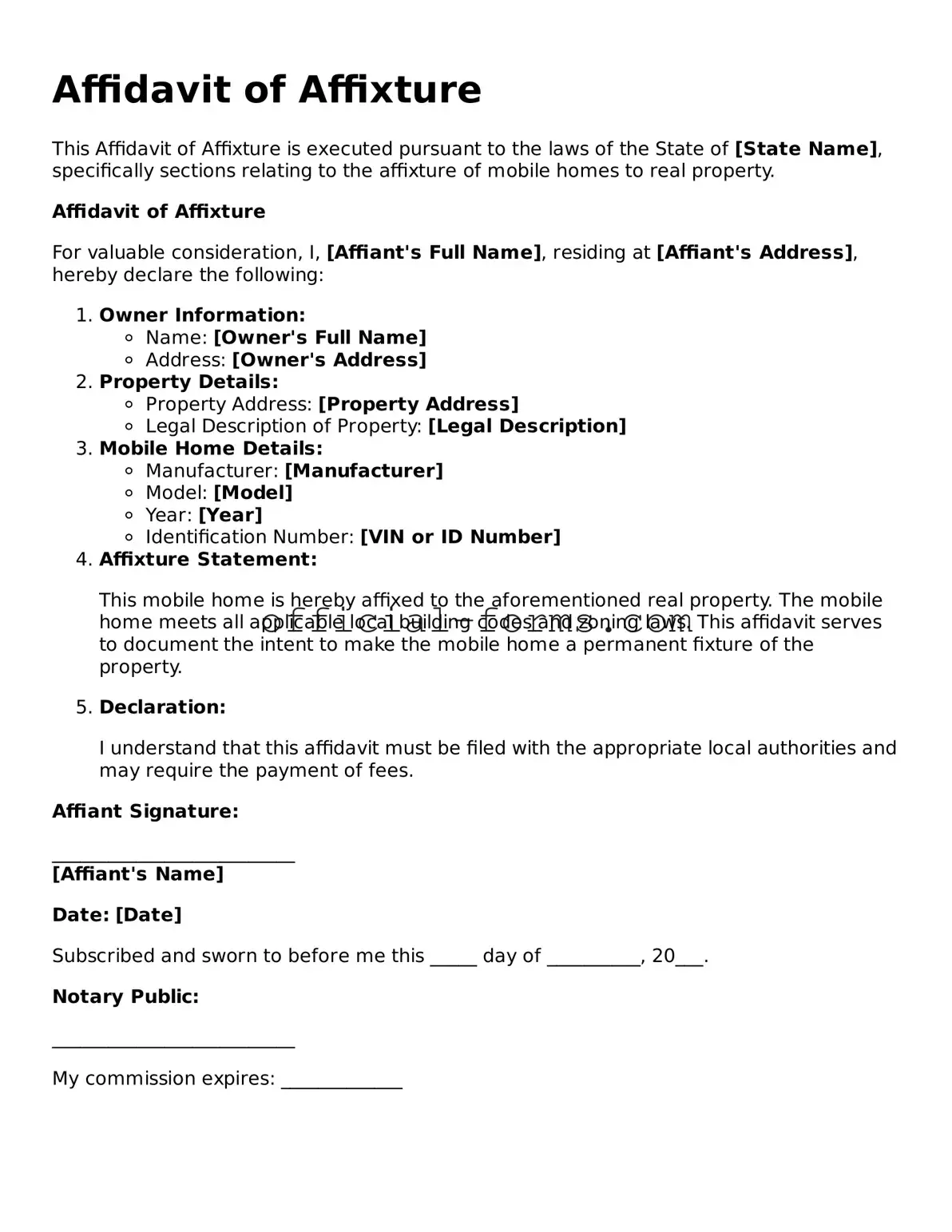The Affidavit of Affixture form serves as a crucial document in the realm of real estate and property ownership, particularly when it comes to mobile or manufactured homes. This form is designed to establish a clear legal connection between the home and the land on which it is situated, effectively converting the home from personal property to real property. By completing this affidavit, homeowners can facilitate the process of securing financing, as lenders often require this documentation to ensure that the mobile home is treated as part of the real estate. The form typically includes essential information such as the identification details of the property owner, the legal description of the land, and specific details about the manufactured home, including its make, model, and serial number. Additionally, the affidavit often requires notarization, which adds an extra layer of authenticity and legal weight to the document. Understanding the importance of the Affidavit of Affixture is vital for homeowners who wish to protect their investments and navigate the complexities of property ownership effectively.
